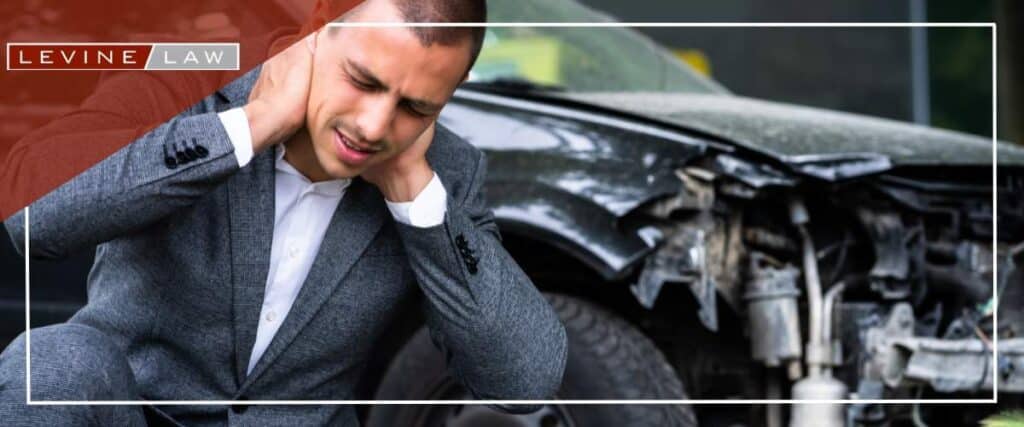When an accident occurs, most people focus on the physical injuries. While these are often severe and can lead to life-long complications, they are not the only consequences victims experience.
The pain and suffering caused by an accident can significantly impact victims and their families. Because of this, you may wonder, “Can I recover damages for pain and suffering after a Colorado accident?”
The short answer is “Yes.” However, some exceptions to this and some important laws must be understood.
At Levine Law, our personal injury lawyers understand the importance of recovering compensation for all the consequences of an accident. We also know the law and how to use it to help you maximize your compensation.
Here, you can learn more about damages for pain and suffering and what the law requires in Colorado.
Understanding Non-Economic Damages
You are entitled to compensation when you are involved in an accident caused by someone else’s negligence or recklessness. While recovering economic damages, like medical bills and lost wages, is straightforward, this is not the case with non-economic damages like pain and suffering.
Non-economic damages are those that are not easy to quantify. These intangible damages include pain and suffering, and other things, such as the following:
- Shock
- Physical impairment
- Inconvenience
- Grief
- Emotional distress
- Scarring
- Humiliation
- Anxiety
- Insomnia
- Inability to participate in activities you once enjoyed
- Loss of consortium
- Loss of enjoyment of life
As mentioned, pain and suffering damages are one type of non-economic damage. This can be included in your personal injury claim or lawsuit and result in monetary compensation for your:
- Mental suffering
- Pain
- Psychological damage
- Anguish
To receive compensation for these damages as part of your lawsuit, you must show proof of pain and suffering due to the accident that caused your injury.
Providing Proof of Pain and Suffering
There are several ways to prove pain and suffering. Examples include (but are not limited to):
- Loss of limb and the physical and mental impact of the loss
- Psychological treatment through a religious leader or counselor
- Proof of your inability to participate in things you once enjoyed (hobbies)
- Long-term disfigurement of the body
- Treatment for pain caused during the accident
- Loss of enjoyment of companionship with family and friends
All these factors (and others) will likely be considered when determining monetary compensation for pain and suffering.
Rules, Regulations, and Laws Regarding Pain and Suffering Compensation
When filing a personal injury lawsuit and including pain and suffering damages, you may wonder if you must have a physical injury from the accident. This is not the case for all situations.
You may still receive pain and suffering compensation because the jury considers things like:
- The hardship of recovering after an accident
- The stress caused by the accident
- The shock of the situation
If these things can be proven, you may still receive compensation for pain and suffering, even without a physical injury.
Colorado Caps on Pain and Suffering
There are caps on pain and suffering damages in Colorado, as well as other non-economic damages. However, there are no caps on economic damages.
The non-economic caps include:
- $500,000 if there is clear and convincing evidence
- $300,000 in medical malpractice cases
- $250,000 in most personal injury and other civil actions
If you experience permanent physical impairment, there are no caps. Also, if you file a workers’ compensation claim, pain and suffering are not considered compensatory damages.
While the jury is not informed of the caps, judges usually limit what a jury can award if they assign more than the established cap.
An example of how Colorado’s damage caps work can be seen in a 2021 case where Steven Straughen filed a claim after being injured when a fracking tank exploded in Weld County. The explosion caused broken bones, a mild traumatic brain, and eventually had a leg amputated.
While a jury verdict awarded him $30 million, he will only receive around $15 million. The rest was awarded for pain and suffering, and (as mentioned) Colorado caps what can be awarded for this. This is something the jurors were not told.
Unfortunately, nothing can be done about this, and even though the jury believed Straughen deserved more compensation, he wouldn’t receive it.
While this is true, knowing about the damage caps before pursuing a claim will help you understand what to expect when filing a claim.
Your Rights to Recover Pain and Suffering In Colorado
The law in Colorado is that you have a right to recover damages for pain and suffering — even if there is no definitive formula for calculating the compensation amount.
In most cases, your attorney will fight to get you as much money as possible. To accomplish this, they may use examples of pain and suffering from similar cases or seek expert testimony from doctors who can speak about how much pain and suffering you have endured.
At Levine Law, we understand the importance of seeking proper compensation for pain and suffering after an accident. If you believe you have a case, contact us today for more information on how we can help you win the compensation you deserve.
Remember, our attorneys know the law and will fight to get you the maximum amount of money possible.
Contact us to schedule your free consultation. We are here to help you fight for the compensation you deserve!
















